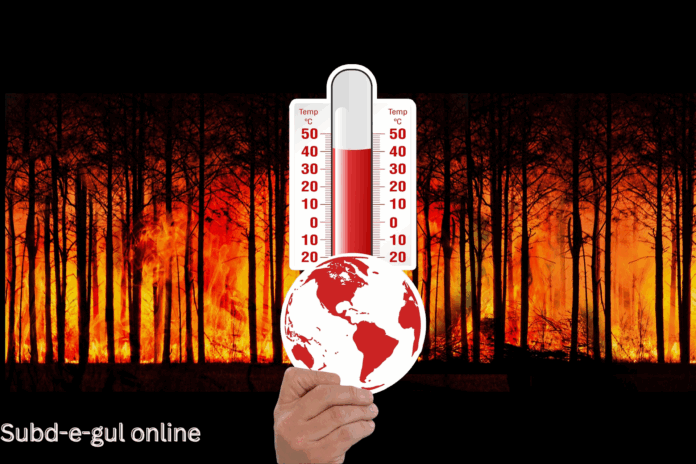A historic heat dome recently brought 147 million Americans in 28 states under heat alerts. Learn what makes steam-heat dangerous, how urban heat islands form, sunscreen tips, and the latest heat forecast in the U.S. Fill your knowledge bank and stay safe with this thorough guide.
A life-threatening atmospheric heat dome is spread over the US and approximately 147 million persons in 28 states are influenced by multiple heat alert systems. From the Midwest to the Northeast, cities are experiencing record-challenging temperatures, triggering emergency heat protocols by local governments.
The National Weather Service (NWS) is working overtime issuing Excessive Heat Warnings, Heat Advisories, and Excessive Heat Watches to warn about prolonged periods of extreme temperatures, such as above 100°F in some locations. On the contrary, this has become much more than just discomfort; it has evolved into a killer heat wave.
147 Million in 28 States Under Various Heat Alerts
This heat dome has a long reach, affecting states from Texas to New York and California to Missouri. The great urban regions of:
- Chicago
- Atlanta
- Philadelphia
- Washington D.C.
- Boston
- New York City
…are all under heat advisories or warnings. Vulnerable populations — particularly seniors, children, and persons with chronic health conditions — are at the highest risk; hence, local and federal agencies strongly urge residents to stay indoors, hydrate, and avoid strenuous activities.
Humid heat or dry heat: Which is worse?
Both kinds of heat are dangerous, but they affect the body differently.
- Humid Heat: Sweat has a hard time evaporating in humid conditions, providing little help for the body to bring itself down. Thus, heat exhaustion or heat stroke happens much faster.
- Dry Heat: It may feel easier to breathe in dry air, but this rapidly absorbs all moisture from the body. When there isn’t enough water present, you increase your chances of organ failure and heat illness.
In the end, both conditions are hazardous if extreme; it’s not about what feels worse, but about what precautions you’re taking.
HEAT KILLS MORE AMERICANS THAN FLOODS, TORNADOES, HURRICANES, OR LIGHTNING
According to the CDC and NOAA, extreme heat is the number-one weather-related killer in the United States, causing more deaths than floods, tornadoes, hurricanes, or lightning.
Every year, more than 700 Americans lose their lives to heat-related illnesses, while thousands more are hospitalized. With climate change having a pronounced influence on weather patterns, these numbers are on the rise.
New York City, Boston, and Washington All Adopt Heat Safety Protocols.
In response to the current heat emergency:
- New York City opens Cooling Centers among all five boroughs and extends pool hours.
- Boston stops outdoor city programs; emergency personnel conduct welfare checks.
- Washington, D.C Hy-dration stations will be set up in Washington, D.C., along with continued homeless outreach services.
Public transport systems, hospitals, and utility companies stand on high alert for heat-related medical emergencies or outages in the power grid. WHAT IS AN URBAN
HEAT ISLAND?
An Urban Heat Island (UHI) is said to occur when temperatures in a city trap more heat than the surrounding rural area. The main factors are: Concrete and asphalt absorb and retain heat; Trees, shrubs, and other greenery in the area are scarce; Heat generated by activities of traffic and buildings.
Within urban areas, the overall temperature is from 2F to 7F greater than rural surroundings. During the heat dome event, when many of the countries battle significantly increased temperatures from hot air from Mexico and other southern countries, the effect becomes even worse and makes it harder for people without cooling to survive.
7 THINGS TO KNOW ABOUT SUNSCREEN
Protect your skin because heat levels are extreme. Here are 7 top thoughts concerning the sunscreen: Use broad-spectrum sunscreen with a minimum of SPF 30. Reapply after 2 hours or immediately after swimming/sweating.
Sunscreen is necessary even on overcast days.
- Apply fifteen minutes before going outside.
- Remember the tops of your feet, neck, and ears.
- Verify the expiration dates.
- If your skin is sensitive, use sunscreens with mineral bases.
- A sunburn can make it more difficult for your body to cool itself, which raises your risk of heat illness.
- Forecast for Heat Risk in the US
According to the NOAA Climate Prediction Center, above-normal temperatures will persist over the following 7–10 days:
The Great Plains
The Southwest
The East Coast
This pattern is particularly dangerous because of the high humidity, prolonged overnight heat, and little precipitation. Communities are urged to maintain their vigilance as the heat dome shows no signs of weakening anytime soon.
Concluding Thoughts
This dangerous heat dome serves as an extreme reminder that this weather could be the new norm. Whether you’re a city dweller or living in the country, it’s important to stay informed, hydrated, and protected. As the U.S. prepares for record-breaking temperatures, the time to take heat seriously is now.
FAQs About the 2025 Heat Dome Emergency
Q1: What is a heat dome?
A: A heat dome happens when a high-pressure system holds hot air over it, trapping it, which kerbs the ability for cooler air to circulate and causes sustained high temperatures over a number of days (or weeks!)
Q2: What is the safest way to stay cool during extreme heat?
A: Staying indoors during peak sun hours (11a.m.-4p.m.), drinking water often, utilizing fans or air conditioning, and checking on vulnerable neighbors or family members.
Q3: What are the signals I may be experiencing heat exhaustion or stroke?
A: Signs include heavy sweating, dizziness, nausea, rapid pulse, confusion, and fainting. If you notice these signs in yourself or someone else, seek medical attention immediately.
Q4: Why is this heat wave particularly dangerous?
A: High daytime and night-time temperatures, humid conditions, and poor air quality all contribute to additional strain on both the human body and human infrastructure.
Q5: Are power outages a concern during this heat wave?
A: Yes! Higher demands for air conditioning due to extreme heat will stretch the electrical grids. During peak heat-hour periods, this can lead to blackouts.



